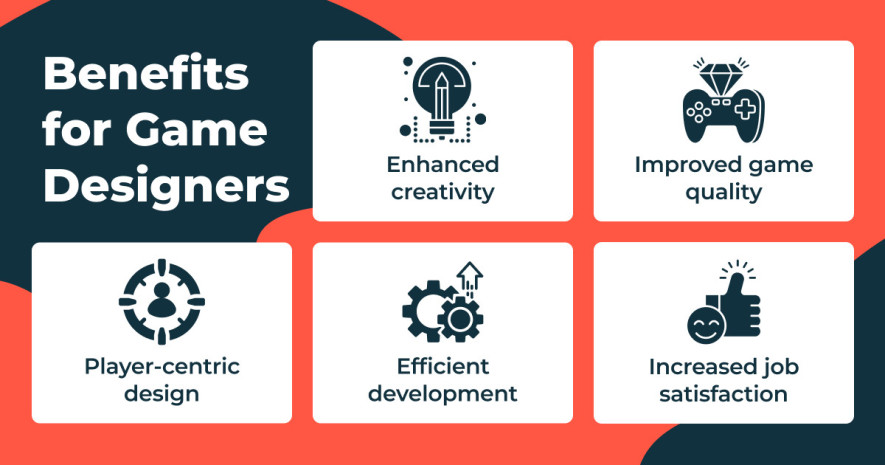Game Dev Collaboration Between Designers and QA Teams
by Anton Yefimenko, Program Director | August 16, 2024 9:43 am
Game development is a complex process in which every cog in the machine plays a pivotal role. Since testing is an indispensable part of game production, fruitful collaboration between designers and QA teams is not just a necessity but a cornerstone for creating a polished, engaging, and successful product.
As the Game Program Director of a leading QA and testing company, I have witnessed firsthand how this interaction shapes the game, ensuring it meets the high standards of both developers and players.
Bridging Vision and Reality
Game designers are the architects of imagination, crafting worlds, stories, and mechanics that captivate players. However, bringing these visions to life in a functional and enjoyable way requires a comprehensive test run. This is where the QA team steps in. Their role is to find bugs and ensure that the game’s mechanics, narrative, and user experience align with the designer’s vision. This alliance transforms abstract ideas into playable realities, bridging the gap between creativity and functionality.
Shaping Impressions With Feedback
One of the most essential aspects of the QA team’s work is providing feedback that directly influences the player’s experience. Early and continuous feedback from QA teams helps game designers refine and adjust their ideas, ensuring that the game meets players’ expectations and delivers the intended emotional impact. This feedback loop is vital for identifying the game’s strengths and weaknesses, allowing designers to make informed decisions to enhance the overall gameplay experience.
Clear and Effective Communication
Communication is a fundamental part of the game development process. A continuous feedback loop between game designers and QA teams ensures that any issues are promptly addressed and new ideas or changes are evaluated from multiple perspectives.
Regular meetings, collaborative brainstorming sessions, and shared documentation platforms facilitate this ongoing dialogue, fostering a culture of teamwork and mutual respect.
Succeeding With Early Involvement
By involving QA teams early in the development cycle, it is possible to significantly improve all the production processes. Rather than waiting for a near-finished product, QA’s early engagement allows developers to understand the game’s objectives and the designer’s intentions from the outset. This early collaboration helps identify potential issues with game mechanics or design choices before they become deeply embedded in the code, saving time and resources.
Engaging Diverse QA Teams
A key strategy in effective QA testing is assembling a diverse team. A QA team should ideally be composed of individuals with varying experience levels in the game genre.
Including both seasoned players and newcomers offers a broad spectrum of perspectives. Experienced players can provide insights into genre-specific expectations and advanced gameplay mechanics, while those new to the genre can highlight issues related to accessibility, learning and tutorials.
This diversity ensures that the game appeals to both hardcore fans and new players, broadening its potential audience and enhancing overall player satisfaction.
Empathy and Understanding
Understanding the challenges and pressures faced by each team is crucial. Game designers must appreciate the complexity of QA work, which often involves repetitive testing and detailed reporting. Conversely, QA teams need to understand the creative constraints and vision that guide the designers’ decisions. Empathy on both sides leads to a more harmonious working relationship where each team’s expertise is valued and leveraged.
Enhancing Player Experience and Quality
QA engineers’ role extends beyond finding bugs: they ensure a seamless player experience. Testers evaluate the game’s balance, pacing, and overall enjoyment, providing feedback that can significantly impact design choices.
For instance, if a particular game mechanic consistently frustrates players during testing, it might need to be reworked or refined. This feedback is invaluable for designers aiming to create a seamless and enjoyable experience. By incorporating QA comments and suggestions, designers can ensure that the game not only functions correctly but also delivers an engaging and immersive experience that resonates with players.
Benefits for Game Designers
Collaboration with QA teams offers numerous benefits for game designers.

Enhanced creativity. Constructive feedback can inspire new ideas and approaches, pushing designers to innovate and refine their concepts.
Improved game quality. Early identification and resolution of potential issues lead to a more polished and higher-quality game.
Player-centric design. QA feedback ensures that the game meets players’ expectations, resulting in a more satisfying and enjoyable experience.
Efficient development. Addressing issues early in the development process saves time and resources, allowing a smoother production cycle.
Increased job satisfaction. Seeing designers’ visions come to life in a well-received game boosts designers’ morale and sense of accomplishment.
Summing Up
The interaction between game designers and QA teams combines creativity and precision, each step carefully coordinated to bring a vision to life. This collaboration is not merely beneficial but essential to the creation of high-quality games.
By fostering early involvement, diverse QA teams, continuous feedback, empathy, and mutual respect, we ensure that the games we test are not only free of bugs but also deliver an immersive and enjoyable experience for our players. In the end, this partnership transforms ideas into unforgettable gaming experiences.
 [1]
[1]Learn more from QATestLab
Related Posts:
- [Image]: https://qatestlab.com/request-a-quote/?utm_source=blog&utm_medium=article&utm_campaign=collaboration-between-designers-and-qa-teams
- Behind the Scenes at Nordic Game 2025: GameDev Trends and Interview with QATestLab’s Delegation: https://blog.qatestlab.com/2025/06/04/nordic-game-2025-gamedev-trends-and-interview-with-qatestlabs-delegation/
- Key QA & Game Testing Takeaways from Paris Games Week 2025: https://blog.qatestlab.com/2025/11/17/key-qa-game-testing-takeaways-from-paris-games-week-2025/
- Devcom + Gamescom 2025: AI vs Humans in Game Development: https://blog.qatestlab.com/2025/09/05/devcom-gamescom-2025-ai-vs-humans-in-game-development/
Source URL: https://blog.qatestlab.com/2024/08/16/game-dev-collaboration-between-designers-and-qa-teams/

